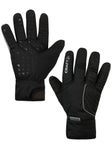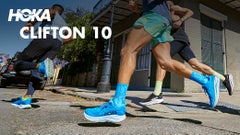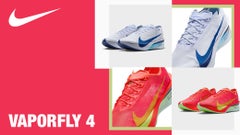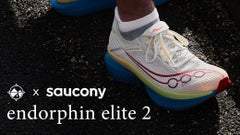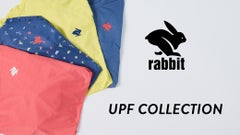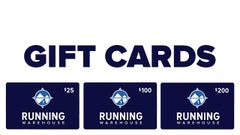How to Stay Dry When Running in the Rain
The Essential Waterproof Clothing and Gear You Need When Running in the Rain
Updated: December 10, 2024 by Caroline Cross
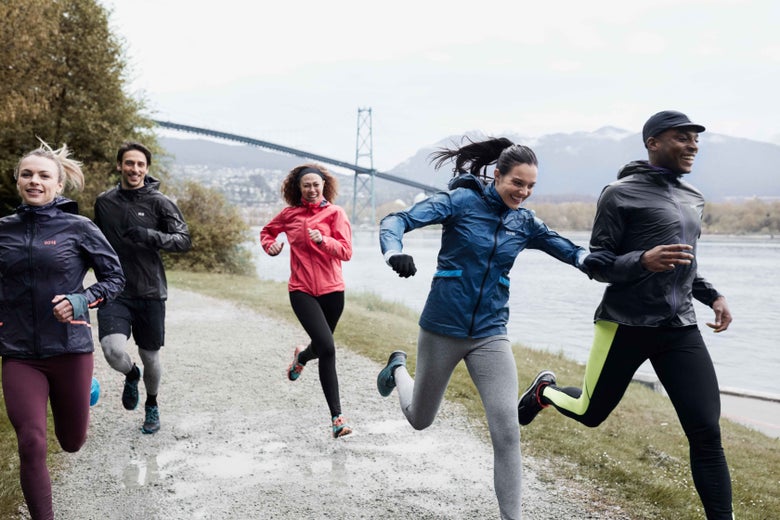
When it comes to daily training and maintaining your fitness levels, you will inevitably have to face the rain at some point. The thought of rain showers derailing a run brings fear to some, but when you are well-prepared with the proper running gear for wet conditions, there is no need to miss out on the benefits of running in the rain.
Ranging from shoes to jackets and accessories, here at Running Warehouse, we offer the best waterproof running gear and clothing to help you stay dry, comfortable, and protected no matter the elements. From head to toe, we break down the features to consider when choosing what type of gear will best suit your preferred running terrain and training style. Above all, when getting dressed for running in the rain, you want pieces that offer the perfect blend of water protection and breathability for optimal performance. So read on to discover the must-have running gear to help you stay ahead of wet weather.

Choose The Right Shoes for Running in the Rain
Wet and cold feet will undoubtedly ruin the entire body's microclimate, making it essential to have the appropriate footwear for tackling rainy conditions. For those whose daily miles consistently get a dose of gray skies, we recommend wearing waterproof shoes to keep your feet dry and warm. Although these shoe options are less breathable than a regular daily trainer, it is crucial to maintain warm and comfortable feet when plowing through wet weather.
Several top running shoes on the market are also available in the GTX version with GORE-TEX lining. GTX offers nearly the same running experience but with added weatherproofing. The new innovation from GORE-TEX is the Invisible Fit technology, which integrates GORE-TEX directly into a shoe's upper. This design differs quite a bit from the traditional GORE-TEX application in running shoes, where the GORE-TEX liner is an additional stretch-bootie layer that wraps the entire upper of a running shoe to keep water out. The best thing about GORE-TEX Invisible Fit is that it provides the same fit and feel as the non-GORE-TEX version of the shoe yet delivers a dry and comfortable running experience.
Choosing the Right Socks for Running in the Rain
Another important footwear decision on wet runs includes choosing the right running socks. As with any running apparel, avoid cotton material because it's weak in resisting water, leaving you with heavy, soggy, and odor-filled socks that lead to blisters (not fun). Choose performance socks with moisture-wicking properties to avoid hot spots for a chafe-free run.
Running socks come in multiple lengths and levels of cushioning. In wet conditions, we advise wearing thicker socks as the fabric builds a moisture barrier to protect you from the elements while providing a warm interior. When it's cold and raining outside, we advocate for longer crew-length socks for added coverage. Ultimately, when choosing socks, it comes down to what best complements your style preference and shoe choice because you will mostly feel the shoe's cushioning when running.

Choose the Right Jacket for Running in the Rain
Choosing the best running jacket for running in the rain is essential for a distraction-free run. For finding the perfect balance of protection and breathability, the main factors to consider when deciding between waterproof and water-resistant jackets include temperature, distance, and the amount of precipitation.
A water-resistant jacket is a great option for those who need lighter performance with a lower price point. These jackets typically keep you dry for about 35 to 45 minutes, which is a suitable choice for runs in the rain that are less than an hour. Although they may not keep out all the water droplets, water-resistant jackets are usually lightweight and breathable, making them ideal for those whose bodies typically run hotter.
Waterproof jackets are designed to ensure that no amount of pouring rain can penetrate the jacket's outer shell. They feature waterproof technologies, such as GORE-TEX, which optimize breathability while preventing water from entering the jacket. On runs lasting more than an hour long in wet weather, we advise wearing a waterproof jacket to prevent water soaking through your layers. The main features to look for when choosing a waterproof jacket are weight, breathability, and packability.

Choose the Right Pants for Running in the Rain
Some runners may feel they can comfortably tackle their miles in the rain while wearing shorts. Running in temperatures above 65 degrees (20 C) in shorter bottoms will work; however, when it starts to dip below 50 degrees, we recommend wearing running pants in the rain for any workout longer than 20-30 minutes. Similar to your upper body, when cold water saturates your legs, it can alter the body's entire microclimate leading to a damp and frigid run.
When choosing running pants, you want maximum water protection combined with breathability. Apply the same principles to running pants as we highlighted above when selecting a jacket. During runs lasting more than 45-60 minutes in steady rain, slip into waterproof pants to keep you dry and protected. Conversely, in light rain and shorter runs, a water-resistant running pant is the best option and provides the most comfort.
Features to look for in a running pant include fit, storage, and accessibility. Generally, we suggest looking for more athletic-fitting pants so your legs aren't swimming in extra material, which reduces the annoying swooshing sound while running. Small details such as ankle zippers for on and off ease of wear and removal can also enhance your post-run experience.
Choosing the Right Waterproof Accessories
Waterproof Running Hats

When you want a double layer of protection or your jacket does not have a built-in hoodie, wearing a waterproof running hat in the rain can be a lifesaver. Nothing impairs your visibility more than trying to see your way through a heavy downpour. Choose a running hat with a firm flat bill to reduce rain runoff on your face and a shell that allows moisture to escape while preventing water from coming in.
Some other features to look for in a running hat include adjustability and reflective details, which are especially helpful on those dark wintery runs. Not only will these running hats offer weather protection, but with the wide range of colorways and designs that we carry, you can personalize your style and add a touch of flair to your running game.
Waterproof Running Gloves

Protecting your extremities from the wind and rain plays a vital role in your overall running experience. When the temperature has dropped below 45 degrees, look for running gloves with a soft fleece liner and waterproof protection to keep your hands toasty and dry. Most running gloves also have convenient touch phone capabilities, so you don't have to stop midway through your run, and reflective details to aid in visibility.
High Visibility Accessories

Stormy weather equals poor visibility, both for you and drivers zooming past you. Wearing high-visibility accessories in wet weather helps keep you safe, so you can be seen and see the path ahead. On your extended runs, we recommend using headlamps as these last longer, while compact clip-on lights do the trick on shorter runs.







